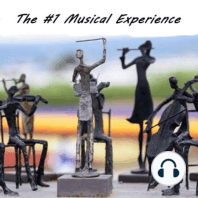16 min listen

Beethoven -Paul Pitman - Moonlight Sonata Op. 27 No. 2 - III. Presto
Beethoven -Paul Pitman - Moonlight Sonata Op. 27 No. 2 - III. Presto
ratings:
Length:
8 minutes
Released:
Mar 26, 2022
Format:
Podcast episode
Description
Ludwig van Beethoven wrote his 32 mature piano sonatas between 1795 and 1822. Although originally not intended to be a meaningful whole, as a set they comprise one of the most important collections of works in the history of music. Hans von Bülow called them "The New Testament" of the piano literature. Beethoven's piano sonatas came to be seen as the first cycle of major piano pieces suited to concert hall performance. Being suitable for both private and public performance, Beethoven's sonatas form "a bridge between the worlds of the salon and the concert hall". The first person to play them all in a single concert cycle was Hans von Bülow, the first complete recording is Artur Schnabel's for the label His Master's Voice. Get bonus content on Patreon Hosted on Acast. See acast.com/privacy for more information.
Released:
Mar 26, 2022
Format:
Podcast episode
Titles in the series (100)
Beethoven Symphony no. 5 in Cm, Op. 67 - III. Allegro attacca: Why We Should Expose Our Kids To Classical Music https://ourtownlive.net #herbw79The Symphony No. 5 in C minor of Ludwig van Beethoven, Op. 67, was written between 1804 and 1808. It is one of the best-known compositions in classical music and one... by The #1 Musical Experience